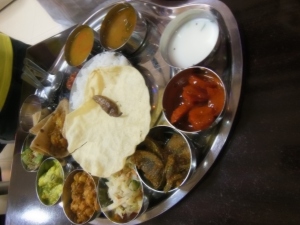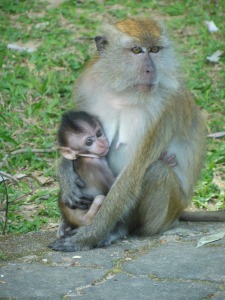Jamie Jenkins: The Long Journey Was Worth It
Maybe you have heard it said, "You can't get there from here." It is one way to describe how difficult it can be to travel from one place to another. Whether you have tried to get across town during Atlanta's horrible rush hour or you are going to the other side of the globe you probably understand.
The old saying certainly captured my feeling last month when I traveled to Malaysia. After four flights and about 10,000 miles my family arrived in Georgetown, the capital of the island state of Penang. The city of 1.5 million people is linked to mainland Malaysia by two bridges. The 8.4 mile Penang Bridge was opened in September 1985 providing an alternative to the ferry which had been the only way to get to the island. A second bridge, 15 miles long, has just been completed, making it the longest bridge in Malaysia and in Southeast Asia.
For more than a hundred years Penang was a British colony and provided an important port for the spice trade and other commerce. The island gained independence in 1957, and subsequently became a member state of Malaysia in 1963. In 2008, Georgetown, the historic capital of Penang, was formally recognized as a UNESCO World Heritage Site. It is officially recognized as having "a unique architectural and cultural townscape without parallel anywhere in East and Southeast Asia."
The drive from the Penang International Airport into the city of Georgetown carries you through the Silicon Valley of Malaysia where many of the world's leading high tech industries are located. Highly urbanized and industrialized Penang, often called "the Pearl of the Orient," is one of the most developed and economically important states in Malaysia. The beautiful beaches and the multitudes of luxury high rise apartments/condos make it a very popular and affordable destination for tourists.
Penang has been called the Food Capitol of Malaysia. One travel writer said it is "every hungry traveler's dream destination." Lonely Planet says it is "one of the world's greatest hawker capitals; the best food isn't found in restaurants but at literally thousands of food stalls that usually serve one signature dish - often a recipe passed down through generations." The traveler's guide goes on to say that to visit Penang and miss the hawker food stalls is like going to Paris and missing the Louvre.
Penang's Assam Laksa, a sour fish-based soup, was ranked 7th in CNN's World's Most Delicious Foods. Whether eating at the 5 Star Eastern and Oriental Hotel restaurant or at Nasi Kandar Pelesi hawker stall, I enjoyed the culinary experience and the food was very cheap.
Penang's population is highly diverse in ethnicity, culture, language, and religion. 55% of the population are Chinese, 35% are Malay, and 10% other ethnicity. 45% are Muslim, 35% Buddhist, 9% Hindu, 5% Christian, 6% Chinese traditional and other religions. There seems to be a high degree of religious harmony and tolerance with an abundance of houses of worship for all of these religions and often they are side-by-side. The people that we encountered everywhere were exceptionally kind and helpful.
The Cheong Fatt Tze Mansion, Kek Lok Si Temple, St. George Anglican Church, Kapitan Keling Mosque, Khoo Kongsi Clan House, Eastern & Orient Hotel, Fort Cornwallis, and the variety of architectural types of houses, street art in the historic district, and Gurney Drive make Georgetown an architectural wonderland. Add places like the Tropical Spice Garden, Butterfly Farm, Penang National Park and Monkey Beach on the northeastern side of the island, the hilly southwestern region of Balik Pulau with its clove and nutmeg plantations and fruit orchards, and Penang is a wonderful destination worth the long travel from the U.S.
The visit to Malaysia was just another reminder that "the earth is the LORD's and everything in it, the world, and all who live in it." (Psalm 24:1)
Taken with permission from Jamie's blog, Thoughts for Thursday.



